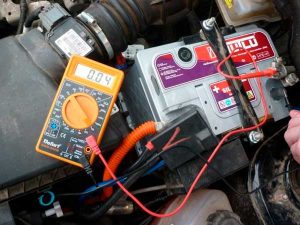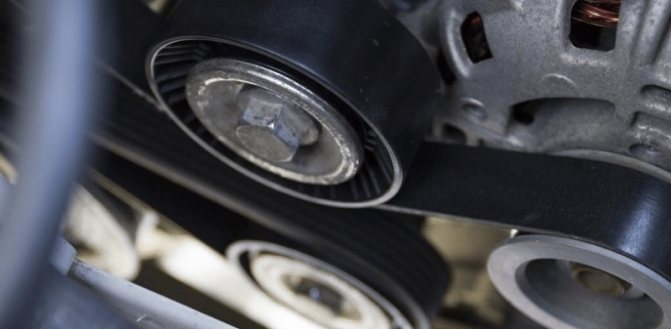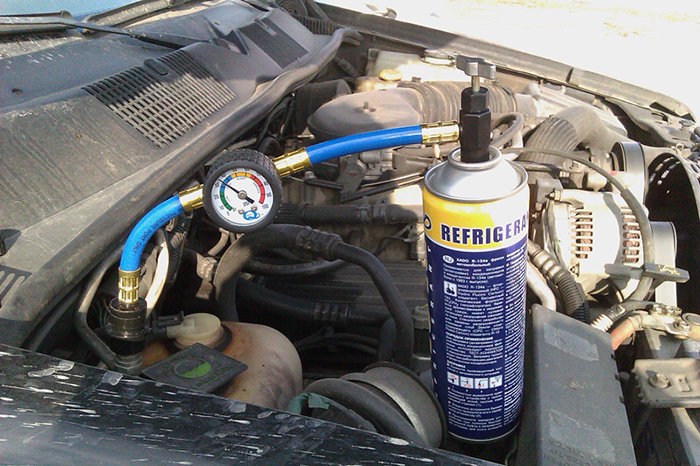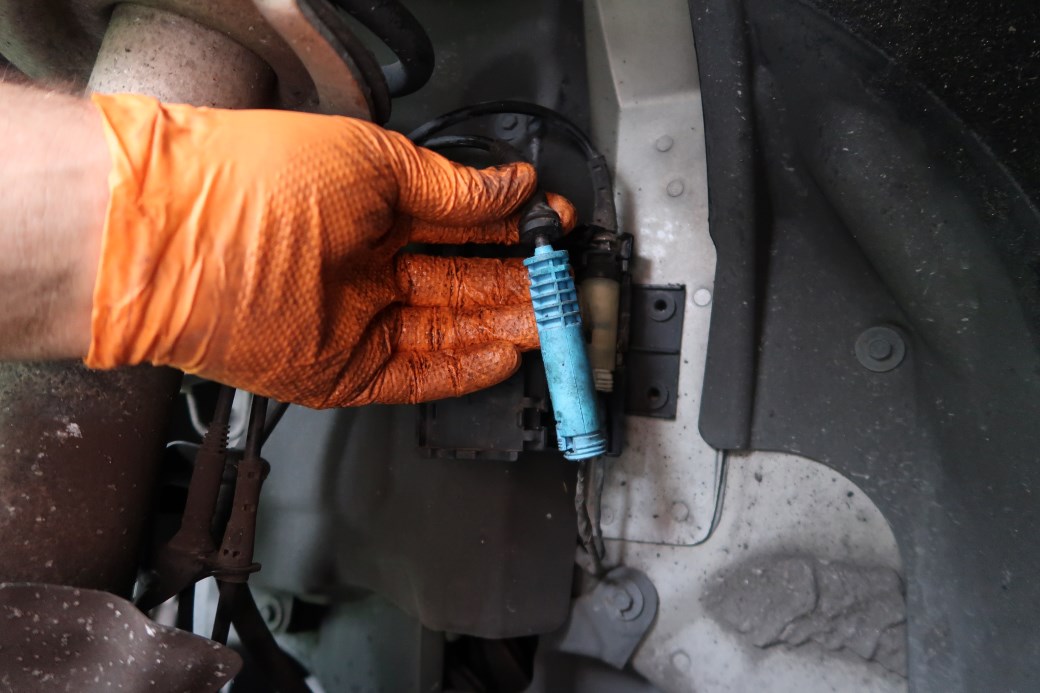 Failures in the motor (belong to the category of complex breakdowns) is a severe “disease” of any car, but there is another, no less important problem is the rapid discharge of the battery.
Failures in the motor (belong to the category of complex breakdowns) is a severe “disease” of any car, but there is another, no less important problem is the rapid discharge of the battery.
This phenomenon is not uncommon, but many drivers do not even think about the factors that can cause this trouble, thereby bringing the “death” of your battery. What are the faults most likely to occur and how to deal with them? The answer to this question you will find in this article.
1. Battery faults
1.1 Sulfation
The battery of any car tends to discharge, and there are many reasons for this phenomenon. In particular, prolonged downtime without periodic recharging, a decrease in the electrolyte level in banks or the use of a severely discharged battery often leads to sulfation of the battery plates. This process is accompanied by the appearance on the surface of the plates of the active mass of large crystals of lead sulfate, unable to dissolve in the electrolyte. As a result, the latter can not penetrate the active mass of the plates, which is why their working surface is significantly reduced, that is, the capacity of the battery itself is lost.
Naturally, with the appearance of sulfation, the battery is not able to hold a charge for a long time, but minor manifestations of this phenomenon can be eliminated with a few cycles of “charge-discharge.”This procedure is carried out as follows: first, the battery must be fully charged, and then discharge with a current of 4-5 A, for example, with the help of a car headlight lamp. After several such procedures, the battery can be restored.
Often there is deeper sulfation, which is the result of improper operation of the battery. Its main reasons are:
- low voltage and insufficient charging current;
- increased level of self-discharge, which is a consequence of short circuits in the battery elements;
- presence of harmful impurities in the electrolyte;
- too high concentration and high electrolyte temperature;
- constant undercharging of the battery, which operates in the “charge-discharge” mode»;
- continuous deep discharges;
- frequent high voltage current charges;
- the long idle time of fully discharged battery;
- a long period (more than 6 hours) between filling a new electrolyte in an uncharged battery and the beginning of its charge.
When all of the above factors (or at least one of them) begin to affect the battery, the lead sulfate on the plates quickly turns into a large-crystal structure and forms a solid crust. Such a rapid formation of sulfate can occur when the plates wetted in the electrolyte contact with air, the reason for which is the baring of the plates due to the reduced electrolyte level. Sulfate in large-crystalline form can no longer decompose in the course of a reasonable charge, and therefore such sulfation will be irreversible.
To avoid crystallization of sulfates it is necessary to observe specific rules of operation and storage of the accumulator battery, that is to maintain it in the charged state, to stay clean and to use the only suitable density of electrolytes. Read our guide on best battery maintainers here https://carinmydna.com/best-battery-maintainer/
1.2 Short circuit inside the battery
Another common cause of problems with the car battery is the formation of a short circuit inside the battery, which is a consequence of the destruction of separators and the formation of spongy lead on the edges of the plates. The main features of the circuit are expressed in low voltage, reduced density and capacity of the battery. Also, the cause of closures often ceases to be a high level of sludge at the bottom of the vessels, which upon reaching the lower edge of the electrodes forms a conductive bridge between them.
To eliminate the short circuit, discharge the battery with a 10-hour discharge current until the final voltage is reached, and then disassemble the element. After removing the short circuit, it is necessary to replace the damaged separators, cut off the growths on the plates, clean the vessels, remove the sludge and wash the plates, after which the element can be re-assembled and charged in the charge formation mode.
1.3 Electrolyte density and level
In most modern car batteries the working fluid is presented in the form of a particular composition – electrolyte, the characteristics of which largely depends on the proper functioning of the battery. The critical parameters of this composition are considered to be its density and level, which is checked every three months. This helps to monitor the condition of the battery and avoid its damage at the most inopportune moment. Check the amount of electrolyte in the battery can be using the filler holes, using a hollow glass tube with an internal diameter of 4-5 mm.
One end of the tube is lowered until it stops in the safety shield, and the hole at the other end is tightly closed, after which the tube is pulled back. The amount of electrolyte remaining in the tube should be within 12-15 mm, and if the battery has a particular indicator (tube), the level of the composition should either correspond to its level or exceed it by 3-5 mm.
From time to time, the electrolyte must be topped up, and for its manufacture use only battery sulfuric acid and distilled water. Technical sulfuric acid and ordinary running water are not suitable for these purposes, because the electrolyte merely is obliged to have a high degree of purity. If these requirements are not met, then self-discharge (sulfation) of the battery, reduction of its capacity and destruction of the plates will be inevitable.
With a decrease in the electrolyte level and evaporation of water, the restoration of the required volume of liquid is carried out using only distilled water, and not the finished electrolyte. In those cases, when the level of the finished composition exceeds the norm, it will have to suck with a rubber pear or ebony tip. If this is not done, then the electrolyte will splash out, which is also highly undesirable.
During the preparation of the electrolytic mixture, a thin stream of sulfuric acid is added to the water and the solution is mixed with a glass or ebony stick. To add water to the acid is strictly prohibited, because the density of water is much lower than the acid itself, and it will not be able to dive into it. As a result, all ongoing chemical processes cause heating and spraying of acid, which is why there is a serious possibility of burns.
2. Malfunction of electrical equipment of the car
The problem with the battery may occur against the background of other vehicle failures. So, for example, the inability of automotive electrical equipment (generator, voltage regulator, starter, fuses, etc.) is fraught with the rapid failure of the battery. Let us examine all these reasons in more detail.
Generator. The most typical problems in the operation of this device are severe wear of brushes, collector, breakdown of the rectifier unit, weakening of the fasteners of the connecting wires, as well as the weakening of the belt tension of the generator drive, which creates conditions of undercharge or full discharge of the battery.
The voltage regulator also often hurts the battery. In particular, undercharging of the battery (including full discharge) is characterized by a drop in the density of the electrolyte and the possibility of its freezing at low temperatures. Overcharging of the battery, high temperatures and strong boiling of the electrolyte leads to rapid destruction of the grids of positive electrodes, as a result of the electrolytic decomposition of water and electrolyte (hydrolysis process).
A full charge of the battery is merely necessary for a solid start of the motor, especially in conditions of severe frost. Using an undercharged battery is a direct way to reduce its life, while a recharged battery will cause a sharp decrease in battery life. This operating mode is most often activated in the summer when the ambient temperature increases significantly, and the vehicle is forced to work hard.
In the cold season, overcharging the battery can cause a faulty voltage regulator. Also, a feature of the battery in the winter is that the temperature of the electrolyte is often much lower than zero. Accordingly, the charging current that passes through the battery is reduced, and to start the motor requires an increased current from the battery to power the starter, and the number of attempts to begin also increases.
It should be noted that the speed of movement of the car on the frozen road is much lower, which means that the return of the generator is also reduced. However, the number of electric consumers used in winter is much higher than in the summer season, which significantly reduces the possibility of a full charge of the battery from the generator. This reason is the basis for preventive measures for all electrical equipment and the battery itself before the operation of the vehicle in the cold season.
Starter. In the event of a malfunction of this device, the engine may not start at all. For example, often there are situations when the starter clicks but does not turn on or off due to sticking power contacts. In the first case, the cause is the oxidation of the power contacts (“nickels”), and the consequences of the second are often expressed in the melting of the starter winding, retracting the relay or bendex failure.
Also, problems can arise due to the severe wear of the guide bushings, which in turn contributes to the temporary or permanent short circuit of the stator and rotor. As a result, the starter current increases, and the torque, on the contrary, decreases (the rotor can fill). The inability to start the starter can be explained by the wear of the collector Assembly (brushes), which makes it impossible to start the generator.
The wiring connecting the voltage sources and its consumers in the normal mode should ensure the operation of the devices and the optimal level of battery charging, but in practice, this is not always the case. The fact is that the slightest damage to the insulation, weakening of fastening points or oxidation in the joints can cause emergencies (ignition), reducing the state of charge of the battery to its full discharge. Damage to the “mass” wire often leads to a working failure of the engine, and the battery and starter can be completely serviceable.
Fuses are designed to provide average power to all electrical consumers in a specific set mode. Any problems and oxidation at the points of contact will disrupt the operation of the included products, and increased oxidation of the fuse in the battery charge circuit causes a decrease in its charge (in this case, a warning lamp will periodically light up on the instrument panel).
The ignition switch is another device that affects the stable operation and functionality of the battery while ensuring the activity of consumers. In case of severe wear of the contact group, the option of automatic stopping of the power unit, failure to start it or increased self-discharge of the battery is possible.
3. Additional sources of consumption
As you know, the normal operation of the generator provides for the use of the only standard installed current consumers, because car developers take into account the energy balance in the automotive network. Simply put, when the motor is running, the generator must cope with all the included electrical equipment. In case of installation of additional consumers (radio, TV, DVD, navigation system or any other devices of entertaining character) there can be situations when the power of the generator will already be insufficient.
In this case, an additional load is received by the battery, which is forced to feed all these devices. After a while, the battery runs out. Also, improperly installed additional equipment often causes high leakage currents even when the motor is muted. Such leaks should not exceed 30 mA / h, as, otherwise, accelerated charge-discharge cycles of the battery will increase the probability of its thick and full discharge, reducing the overall operating life.
4. Violation of the rules of exploitation
In addition to the technical faults of a vehicle, the rapid discharge of the battery can affect the car owner himself. There are many ways to “kill” the battery, and many drivers do not even know about this possibility.
For example, problems with the battery often lead to a charge current of too much force, exceeding the norm several times. From such a tremendous value, the electrolyte in the battery overheats, the electrodes begin to layer, and then the separators are destroyed. The reason for this effect is often forced charge modes with the use of powerful chargers.
Also not the best way to the battery affects the excessive discharge current from the starter, and to such an extent that the starter itself stops scrolling. Such deep discharges lead to warping of the plates and subsequent battery failure.
From the owner of the car depends on the control of the voltage level in the onboard network, because its low level leads to a slow “death” of the battery. Constant discharge reduces the density of the electrolyte, and this, in turn, leads to a decrease in the essential characteristics of the battery.
Another way to “help” the battery to order a long life – is to maintain the increased voltage of the vehicle, which will lead to a regular recharge of the battery. In particular, the electrolyte level decreases and its density increases, causing sulfation of electrodes. Naked electrodes quickly corrode the active mass swells, and then completely crumbles. In this case, reducing the battery capacity and its complete failure is only a matter of time.
Damage to the battery can also be caused by contamination of the electrolyte with foreign substances. Put simply, in no case, can not wipe the battery with a clean rag, pre-soaked in ammonia or soda solution. It is impossible to add undistilled water to the electrolyte since after that this composition will not be able to perform all the functions assigned to it.
Also, experts do not recommend overheating the battery, because, with an increase in the electrolyte temperature of more than 95°F, the processes of electrode wear begin to intensify, and with a further increase in this indicator, the battery will not live for a long time. However, the battery may suffer from low temperatures. For example, if you completely discharge the battery with the starter or pour water and mix it poorly with the electrolyte, then you will not have to hope for the long service of this device.


